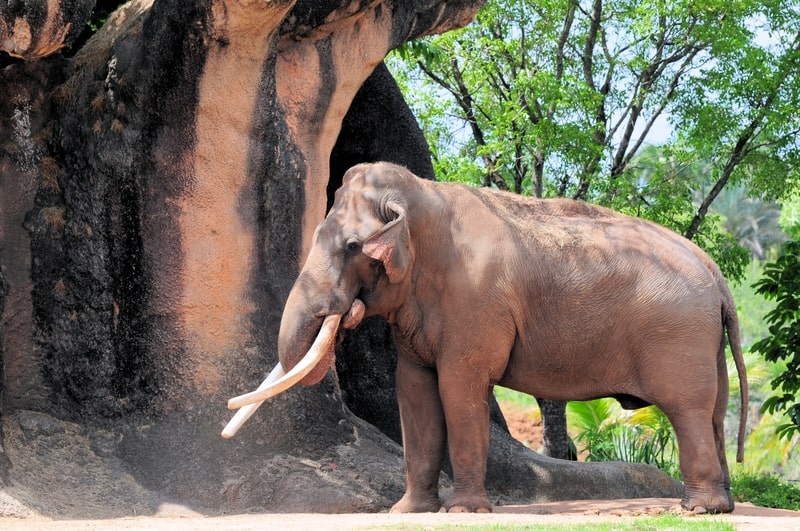Last updated on June 4th, 2023
We may not always know or appreciate it but we are blessed to have elephants as the largest land animals. Intelligent and gentle, these giants have been around for millennia and while they are much admired and loved by some cultures, they do not always receive the respect and care they so deserve. Elephants are descended from an ancient elephant specie that walked the earth about 56 million years ago in Africa. This specie then traveled to other regions via land bridges. Floppy-eared, calm, equipped with an adorable trunk and cute tusks (well, at least some), elephants are beloved by many. Kids who love elephants find them fascinating because of their sheer size and gentle demeanor.
Facts about Elephants
The word
1. The word elephant is derived from the Greek word, elaph, meaning ivory. Elephants are a member of the order Proboscidea, to which animals that have a trunk belong. They are the only living members of this order. It also includes extinct animals such as mammoths and mastodons.
Two types
2. There are two types of elephants – the African elephant and the Asian elephant. The African elephant has two distinct species – the forest and the savanna elephants.
Asian vs African
3. Asian elephants have smaller ears than African elephants. The shape of the head also differentiate them. African elephants have round heads while Asian elephants sport a twin dome.
From 4.5 to 15 mph
4. Did you know that the average walking speed of an elephant is 4.5 miles per hour? And during an experiment, some elephants demonstrated that they could walk or run up to 15 mph. Considering their size, it is surprising how fast they can move. Now, this is an amazing fact about elephants that you can share with your friends and family.
Meal time!
5. In a day, an elephant can drink 50 gallons of water and eat 220 pounds of food or 70,000 calories a day. They eat 12 to 18 hours a day.
6. Elephants only digest about half of their food.

7. The average elephant needs about 150 kg of food everyday. This is why they are constantly on their feet, roaming to search for more food.
Shit a lot
8. Since elephants eat a lot, they also produce a lot of dung. According to some estimates, they produce nearly 100 kilograms or 220 pounds of dung every day. Now, that is a lot of shit!
From dung to paper
9. The elephant dung itself is mostly fibre. And since paper is made from fibre, an elephant’s one day excreta can be used to make roughly 115 sheets of paper. This process also helps reduce deforestation.
When in group
10. A group of elephants is commonly called a herd, or less commonly, a parade!
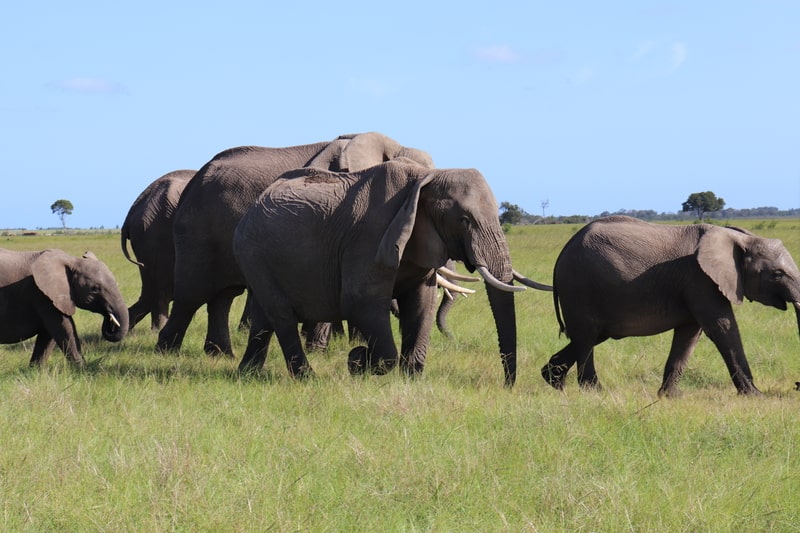
Trunk
11. Did you notice their trunk? Well, learn that their trunk is actually the fusion of the nose and upper lip. Ask your friends and check if they are aware of this awesome elephant fact.
12. Although elephants seem to drink using their trunks, they do not actually imbibe water through it. Instead, they siphon the water using their trunk, then pour it into their mouths.
13. Elephant trunks are made up of about 150,000 muscles. This is why their trunks are quite flexible and capable of doing plenty of things. They don’t only smell with their trunks (elephant trunks have nostrils at the end) but they also use it to touch and feel objects and other elephants.
14. An elephant’s trunk is similar to our fingers in that he can do certain tasks with it. He can pick up small objects such as peanuts using his trunk. He can then break the shell, blow it away by releasing air through the nostrils at the end of his trunk, then bring the peanut to his mouth to eat using his trunk. And yes, some elephants even learned to paint by holding a brush with their trunk.
Warm blooded vertebrates
15. Elephants are vertebrates who are warm-blooded and produce milk to nurse their babies.
One leg on the ground – always!
16. The elephant is a mammal and it is the only one of its kind who cannot jump. And they are the only mammals in the world who cannot do so. Note that elephants always keep their one leg on the ground even while running whereas other mammals like rhinos and hippos cannot jump but they can have all the four feet off the ground at the same time when they run.
27 beats a minute
17. If elephants seem cool and collected, it is probably because their pulse is slow at just 27 beats a minute. Among other elephant facts, this is the one you can tell your friends and family and impress them with your knowledge about elephants.
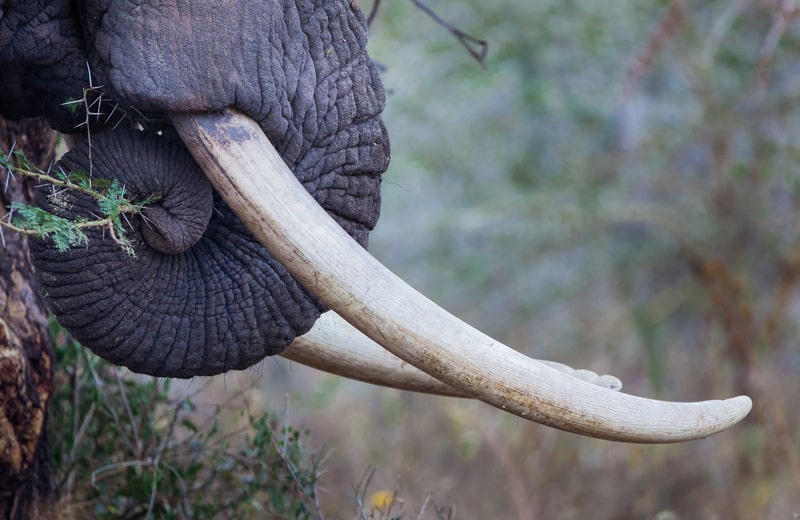
18. Elephants have 26 teeth in all, 24 of these are molars and the remaining two are the tusks. Molars are in six sets of four, as one set is worn down it gets replaced by the next set pushing in from behind.
19. It is interesting to note that elephants are gifted with 6 sets of molars in a lifetime. Due to grinding and chewing plant material, their set of teeth wear down, and the next set pushes through.
Good scanners
20. Elephants have better peripheral vision. Because of the position of the elephant’s eyes on his head, he could see objects to the sides and rear better than objects in front. When he’s walking and exploring territory, he instead uses his trunk to feel what is ahead of him.
21. Elephants have a third eyelid. The upper and lower eyelids of an elephant move horizontally, up and down. His third eyelid, however, moves vertically over his eyes. This eyelid helps protect his eyes when he is bathing, feeding, or just having fun in the dust.
Baby elephants
22. Did you know that baby elephants can drink up to 3 gallons of their mother’s milk every day? And the calves drink their mother’s milk for about two years, sometimes longer.
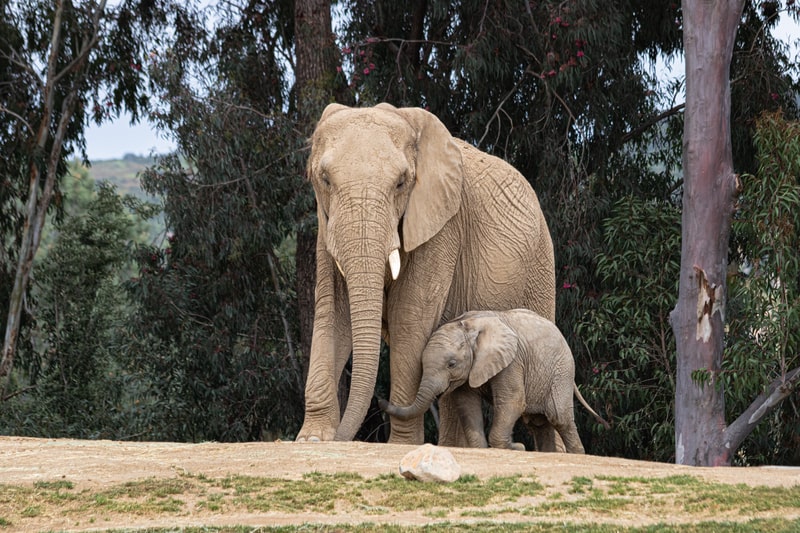
23. Elephant skin is about 2.5 cm thick. African elephants have more wrinkles than Asian elephants. Skin folds help retain moisture and keep the animals cool, which means that either specie has evolved to adapt to its habitat.
24. Elephants do have hair all over. Elephants may look bald from a distance but they actually have hair. It may not be as thick as those in other animals, however. Asian elephants also have more hair than African elephants. The elephant’s bristly hair helps them cool down. If they had thicker hair, they would have a harder time staying cool where they live.
Purrrr!
25. Elephants purr. Elephants communicate vocally and they also produce a sound that is similar to a cat’s purr, although the elephant’s noise is more of a soft, low rumble. This is their way of talking and yes, singing.
26. Elephants rumble. This means that they communicate through vibrations. It is believed that elephants have special receptors in their feet and trunk. When in distress, elephants rumble and this low frequency rumbling generates seismic waves in the ground that can travel up to 20 miles along the surface of earth. This activity also helps them detect stress from a herd many miles away.
Sense of smell
27. Elephants can smell water up to 12 miles. This is an interesting fact about elephants that you can tell your kids or friends.
28. Did you know that elephants are naturally born swimmers and can swim for hours while being completely submerged in water? Their body mass allows them to enjoy good buoyancy and float in the water or, if they choose, submerge themselves for a dive. Their trunk helps them breath.
29. An elephant’s trunk can hold more than 8 litres of water at a time.

30. Elephants are herbivores.
31. When it comes to tusks, only Asian male elephants can grow tusks while both male and female African elephants do. Note that not all elephants, Asian or African, develop tusks as adults.
32. There are only an estimated 40,000 to 50,000 African elephants living in the wild and they are considered endangered. About 90% of these animals were decimated due to poaching.
Cooling mechanism
33. An elephant’s ears help dissipate heat. Since Africa has a higher temperature compared to Asia, African elephants evolved to develop larger ears.
34. An African elephant’s ear is six feet from top to bottom and five feet across. This enormous size of their ears is because of the fact that they help keep the elephant cool in high temperature. The blood circulating through the veins in the ears also gets cooled when elephants flap their ears. This cooled blood re-circulates through the animal’s body and helps regulate its core body temperature. Now, you understand the science behind the size of its ears! This fact should certainly be on your list of the top 10 facts about elephants.
Dust baths
35. Elephants give themselves dust baths to remove parasites from their skin.
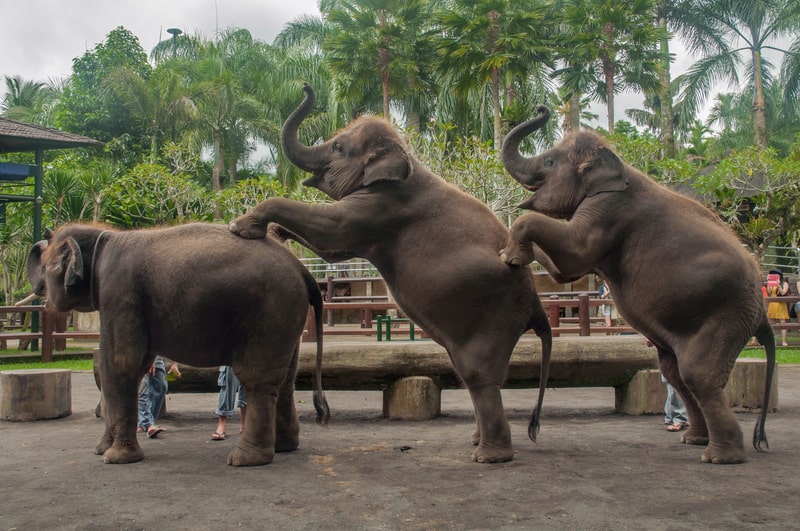
36. The African elephant brain is three times larger than the human brain. It is estimated that there are 257 billion neurons in the brain of the world’s largest land mammal. However, a large concentration of the neurons (97.5%) is found in the cerebellum.
Bees deter them
37. Did you know that in spite of the fact that elephants are the largest animals on land, they are very afraid of bees? They are so terrified of the tiny insect that they will flap their ears, make noises and stir up dust when they sense the buzz of a bee hive. This fact was used productively by African farmers to keep their farms protected from elephants.
38. The United States banned commercial importation of ivory in 1989.
Self aware
39. Elephants are intelligent and self-aware as well. Researchers discovered that elephants could recognize themselves in mirrors.
40. Elephants show affection to the other members of their herd by stroking other elephants head and back with their trunk to console or comfort them.
Loyal friends!
41. Lawrence Anthony, who was an environmentalist and an international conservationist, from South Africa, was able to communicate with a herd of elephants and got them to a protected reserve when they were in distress and were afraid of other humans. The elephants settled in the reserve and led their lives while Anthony was bonding with them and taking care of them. However, sadly in 2012, after a sudden heart attack, Anthony passed away. And to everyone’s surprise, the elephants marched from one corner of the reserve to the other, and came to Anthony’s home and stood outside of it. Their presence outside of his home signified that they were mourning the demise of their friend; and after two days, they went back to their place in the reserve. No one knows for sure why this happened, but it is understood that the animal has the ability to build an emotional bond even with human beings.
42. African savanna elephants grow larger than forest elephants.

Female leaders
43. African herds are matriarchal. Each herd is led by the oldest female in the group.
44. Young and adolescent males stay with the herd until they are about 12 or 15 years old. They then leave to live solitary lives. They may sometimes form a small herd with other males but these groups are temporary.
Hierarchy plays a role
45. Males in small groups also form a social structure determined by a hierarchy. The leader is usually the oldest and strongest. They are the ones that protect the herd. The more docile ones are those that help stabilize the group.
Born to mate
46. Bull (male) elephant groups are nomadic. This allows them to maximize their ability to reproduce, since they can potentially associate with several different herds in a year. A bull can potentially mate with 30 females in just one year.
47. The smallest family unit of an elephant consists of about three members, always led by the oldest female. The older the female is, the higher her rank in the herd.
48. Older females help take care of the calves in the group. The more older females there are in the group, the better the chances that the calf will survive.
49. It is possible for an elephant family unit to meet and bond with other units. They may be related or unrelated and usually congregate to mingle, interact, and feed together. The usual meeting places are watering holes.
50. In regions that have more food, elephants form larger family units. In regions that have less food, they have smaller units.

51. To determine dominance among bulls, they play-fight or spar. Often, larger, older bulls win due to their strength.
Not territorial
52. Contrary to what some people believe, elephants are not territorial animals because they have a wide home range.
Reason for erratic and unpredictable behaviour
53. Elephants have a gland between the ear and the eye, just beneath the surface of their skin. This gland is called musth. Each year, these glands secrete a substance and becomes inflamed. When male elephants are in musth, they exhibit erratic, unpredictable, and dominant behavior.
54. Bull elephants do not experience musth at the same time as others. In short, they do not have a musth season. When a bull elephant is in musth, other bulls avoid a confrontation with him.
55. An elephant in musth may rub itself against a tree as a way to scent-mark it. This is a means to signal other males about his current status.

56. If elephants seem to laugh and smile while bathing, it’s because it is a pleasurable activity for them. Bathing helps get rid of pests and parasites.
How they sleep?
57. Elephants usually sleep standing up but they may also spend half of their sleeping hours lying on their side. They are noisy sleepers but could get by with just four hours of dream time.
58. If you see an elephant toppling a tree, it’s likely a young bull testing its strength. Bulls are so strong that they can push and uproot an 18-inch diameter tree using just their trunk, head, or a leg.
59. African elephants are threatened mostly by poaching. Asian elephants are threatened by habitat loss and conflict with humans.
. . . continue reading elephant facts on the next page


